Since 1888, a small wooden structure has stood on the southeast corner of Powell and California Streets. It’s an essential sentinel protecting the world’s only cable car crossroads. Here’s its story.
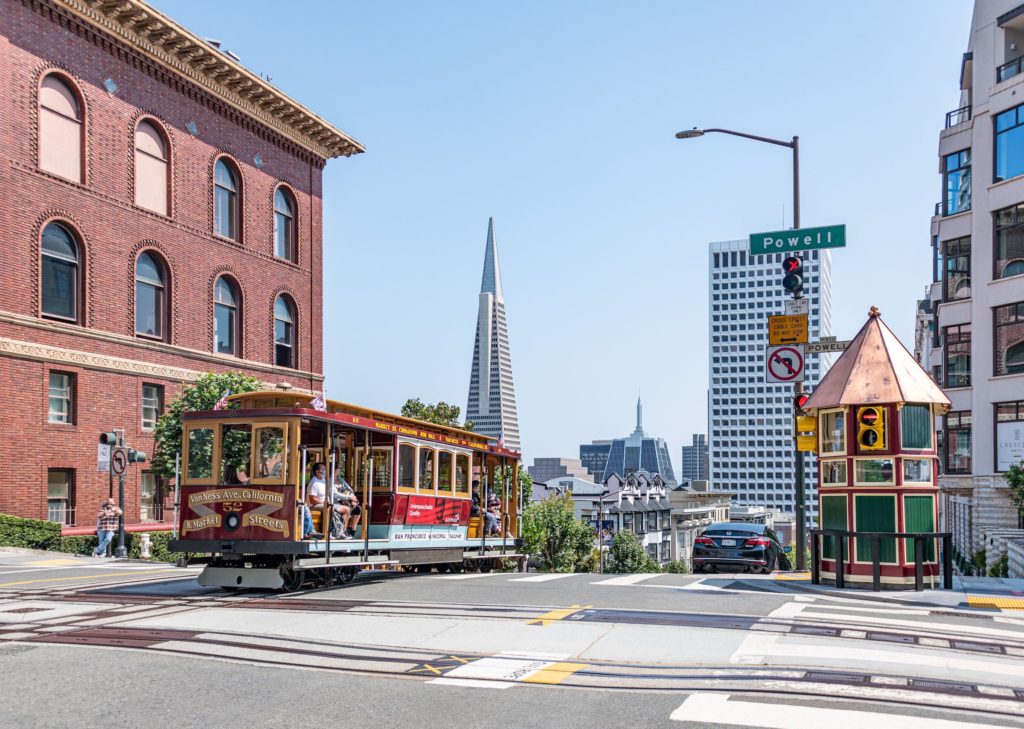
The first tower opened with the Powell cable line in 1888. The Cal line had been in service ten years by that time, but the opening of the upstart Powell line meant cable cars would be climbing their respective hills toward their crossing “blind,” unable to see each other, with disastrous consequences should they reach the intersection at the same time. A worker in the tower signaled with a kerosene lamp to cable cars on both lines when they could safely start up the hill. The two lines’ owners shared the cost.
That first tower burned in the 1906 earthquake and fire, but a new one replaced it in 1907—and it’s still there today (much rebuilt, like the cable cars themselves). This replacement tower was jointly owned by United Railroads (later Market Street Railway Co.), owner of the Powell lines, and the California Street Cable Railway Company. By 1952, it was wholly owned by Muni. The only real alteration to the tower was replacement of the kerosene signal lanterns with electric signal lights at some point.
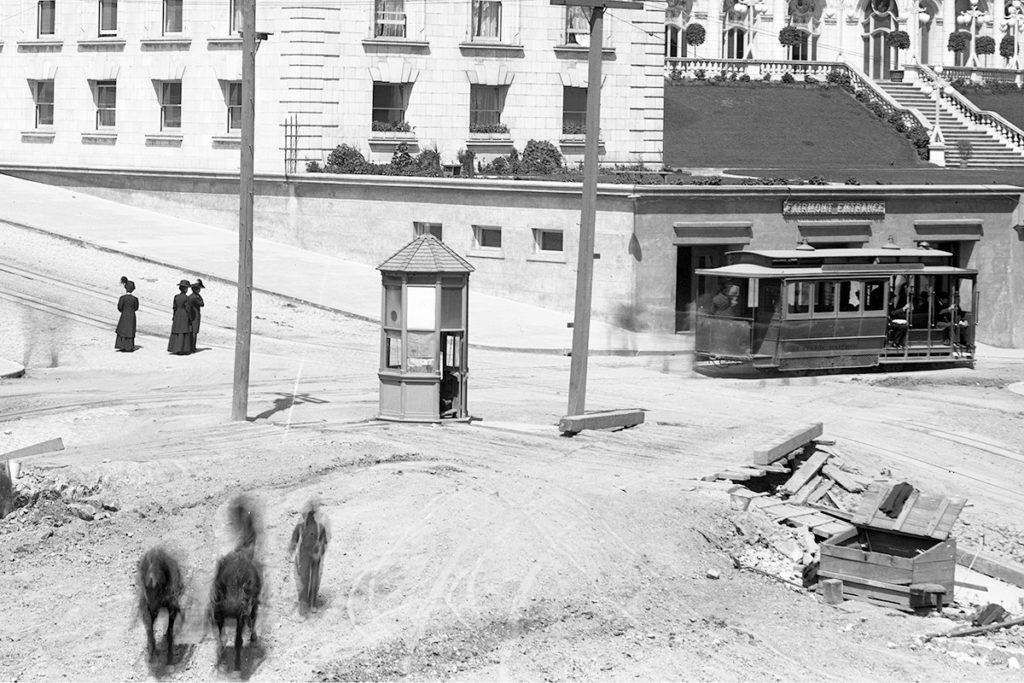
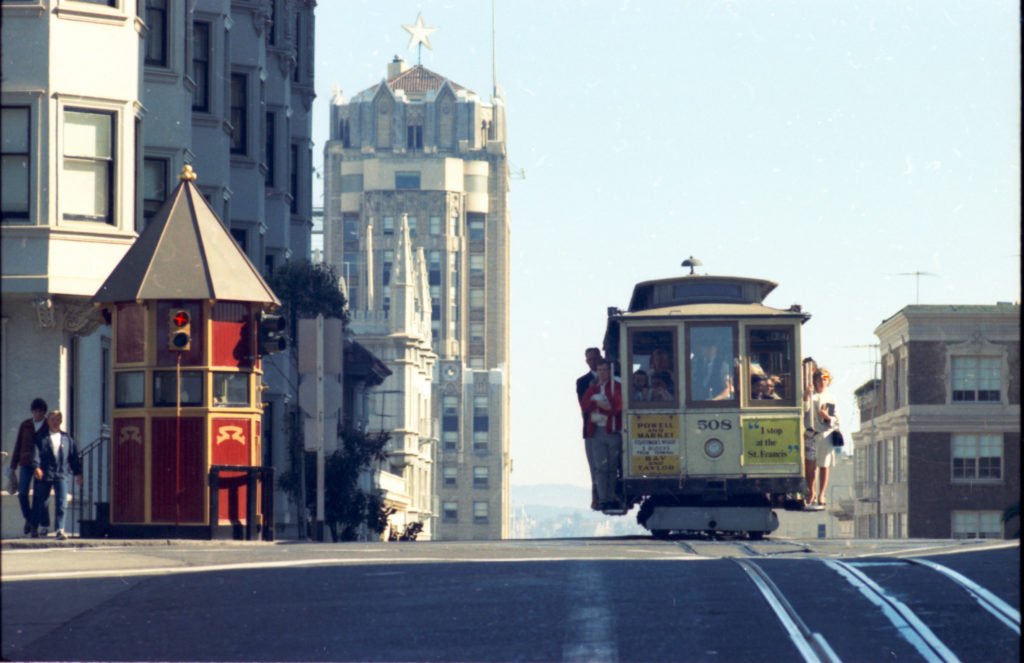
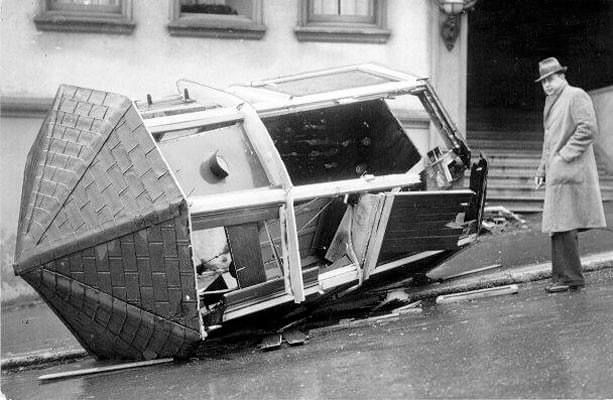
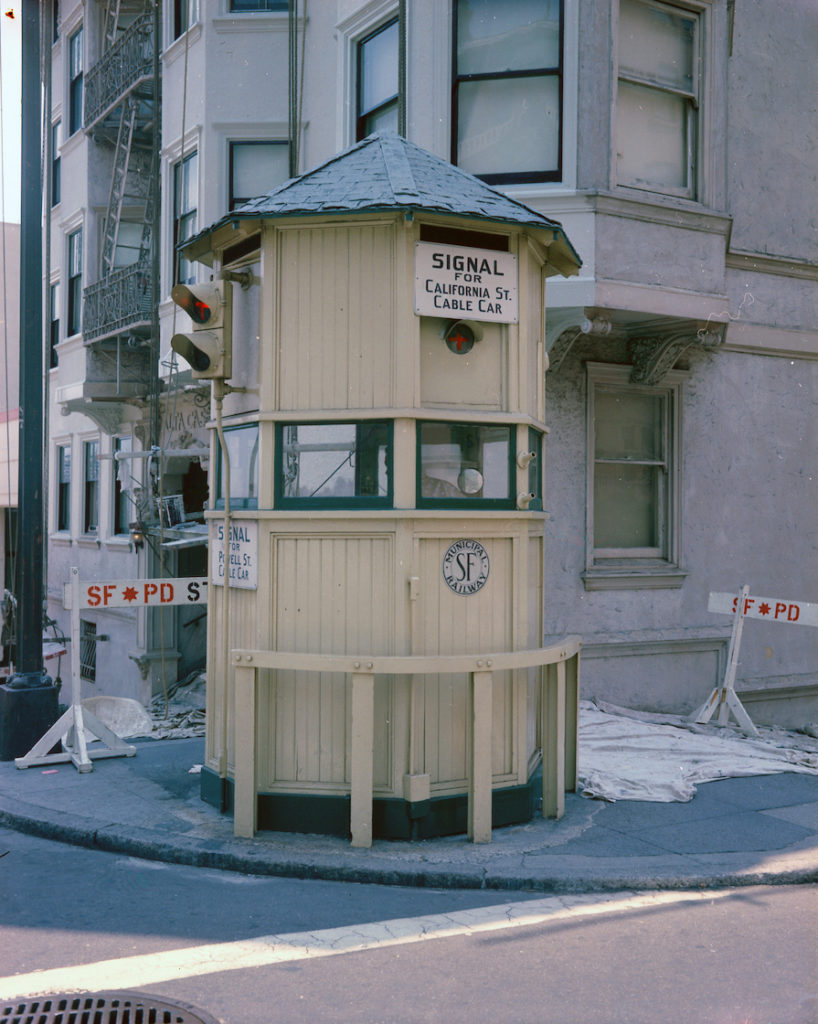
In the 1950s, Muni repainted the tower from the green and white used by Market Street Railway to a bland, solid cream. In 1967, it was renovated, the biggest change being a new copper roof to replace the rotting wood shingles, and a new paint job honoring the maroon and tan of the California Street cable cars. In 1988, the tower was repainted again, this time back into the Market Street Railway’s green and white. But the successive coats of paint increasingly failed to hide the deteriorating condition of much of the wood in the tower.
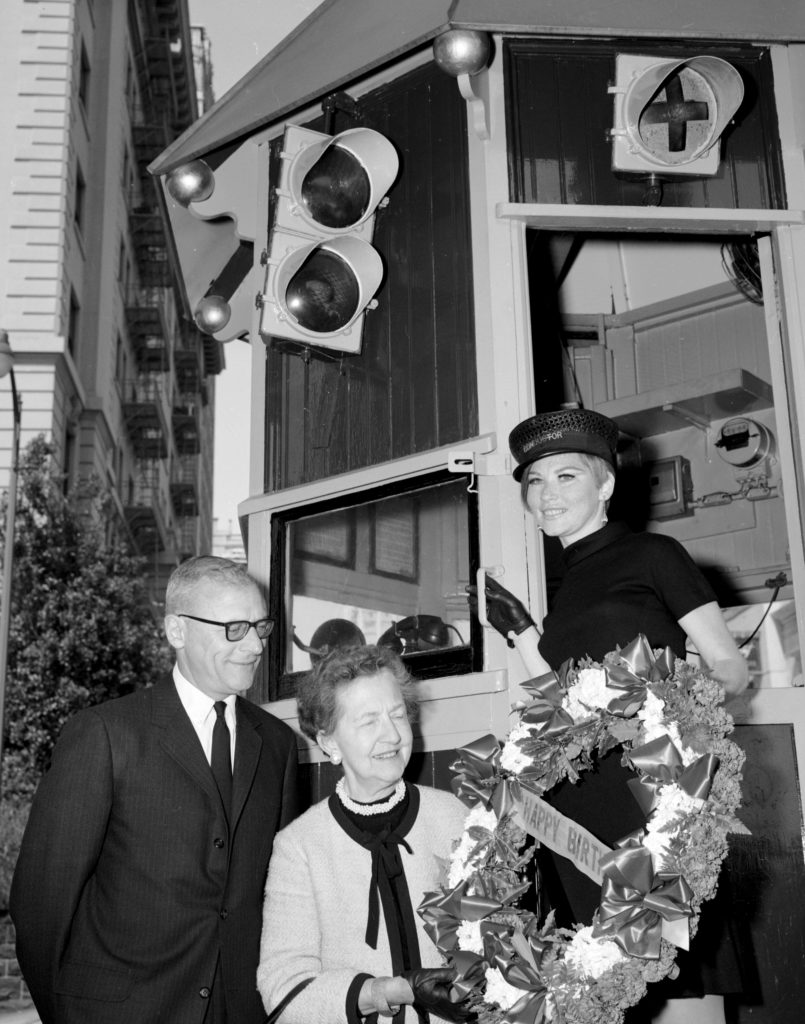
When the cable car system was completely renovated between 1982-84, a full set of traffic signals was installed at the intersection of Powell and California Streets, with a pre-emption device that cable cars climbing the hill on either street would trigger, changing the signals in their favor, which could have led to the tower’s demise. But apparently, the system did not work reliably enough (or perhaps even at all) and it wasn’t long before the traffic lights were set permanently to flashing red in all directions, with the cable cars relying on the signal tower operator to tell them, by the lights on the tower, when it was safe to come up. Today, there are just single red flashing lights at the intersection and the tower’s purpose endures.
Ready for its makeover
In late 2019, the developer of the Crescent Nob Hill, a luxury condominium development at the southeast corner of the intersection, contacted us and asked if we and Muni could work together to freshen up the tower. When the pandemic shut down the cable cars, the crack cable car maintenance crew had time to do a beautiful job. They painstakingly cleaned, polished, and sealed the 1967 copper roof, which had never been properly maintained, meticulously replaced rotted wood, stripped much of the paint, and installed all new windows. Inside, they installed a new drop ceiling and floor and replaced all the wiring.
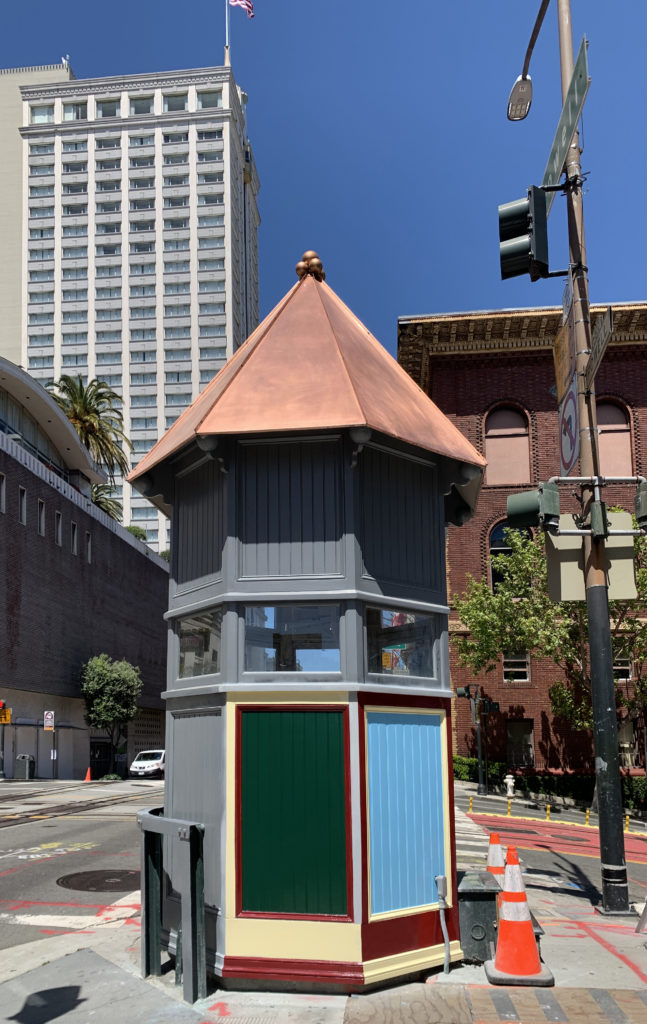
But then, a question. How to paint the 113-year old structure, given its history of four different paint schemes? Several meetings, including the cable car team and Market Street Railway, led to a decision to use a palette of colors honoring the tower’s historic owners: the green shared by our namesake, by United Railroads, and of course by Muni; Cal Cable’s maroon; Muni cream; and the tan trim used on the cable cars themselves.
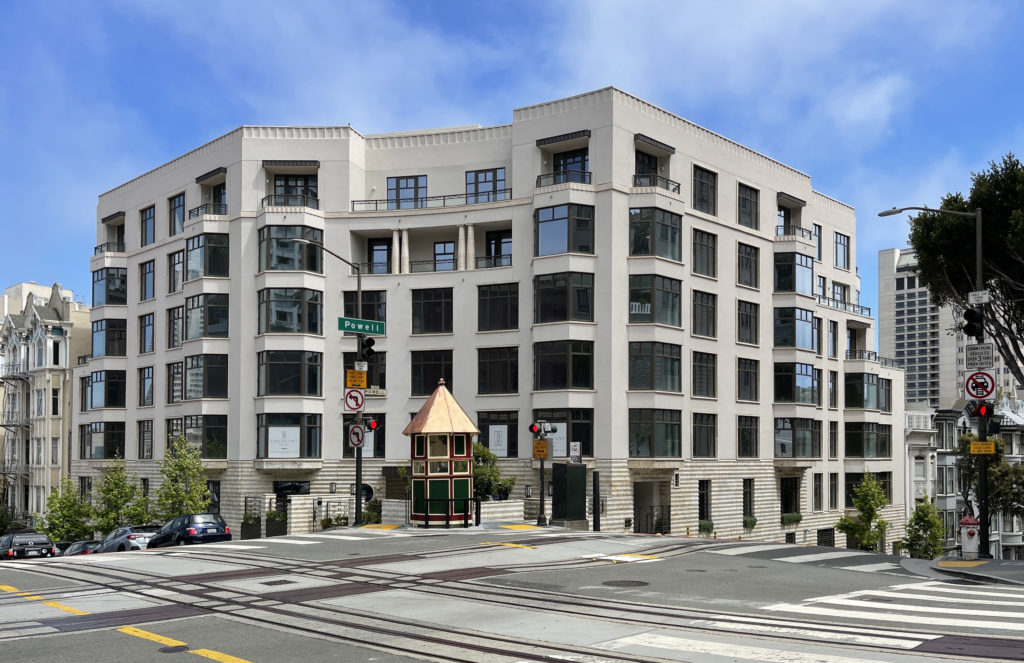
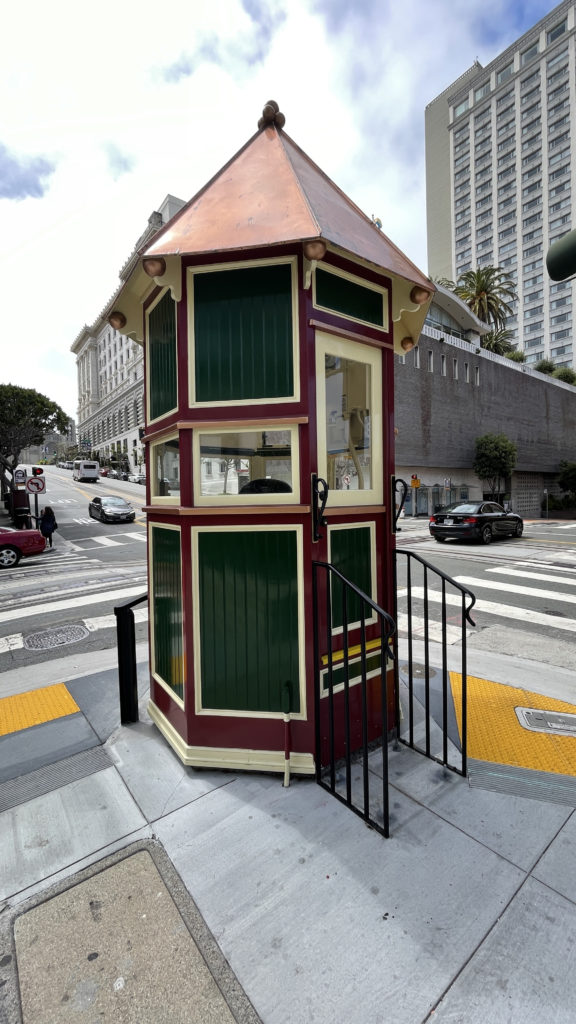
Jeremy Menzies, SFMTA’s photographer, has a great blog post with more details and historic and current photos, at www.sfmta.com/blog/sfmtas-cable-car-signal-tower-gets-refresh. Definitely worth your time.
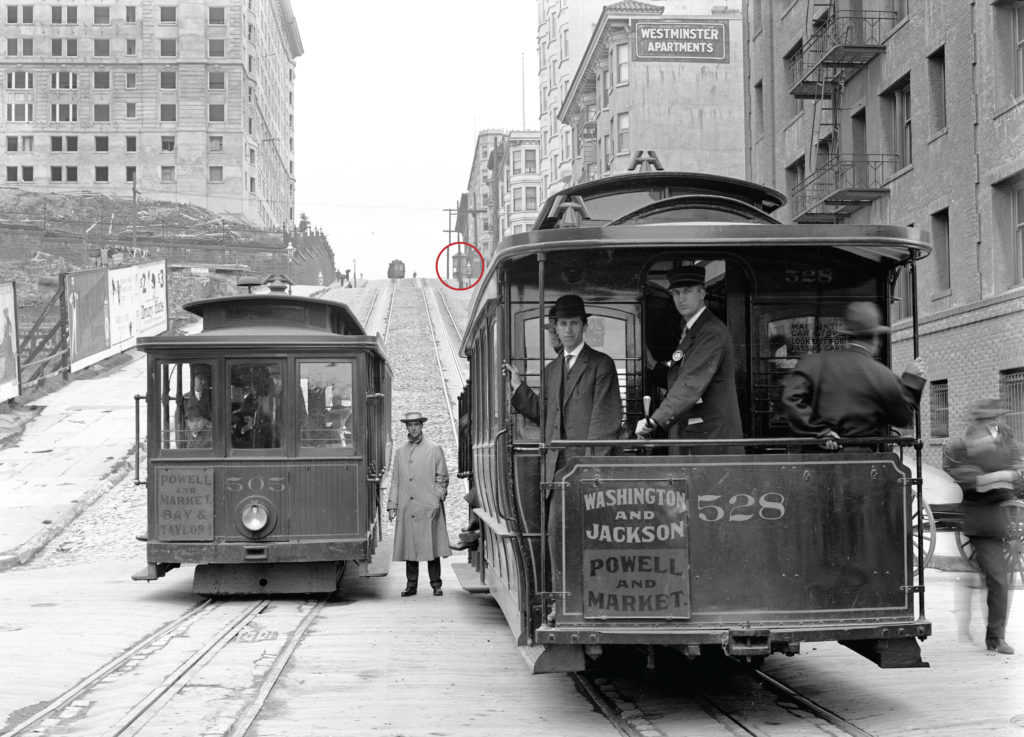
Thanks to the great Muni cable car team for this wonderful refresh of the historic cable car signal tower. The team included Wes Valaris, Arne Hansen, Andrew McCarron, Luis Carazo, Pete Cunha, Danny Hicks, Henry Pegueros, Lionel Perezdiez, and Harold Stewart. Thanks, too, to Crescent Nob Hill and developer Grosvenor Properties, represented by Landis Nasser, for being the catalyst for this project and for donating to Market Street Railway to help us help Muni.
– By Rick Laubscher
If you like our exclusive content, please consider even a small donation to help our nonprofit.
Great knowledge of this iconic part of the system, learn something about this great transit system all the time.
Thanks Rick.
any plans to restore any of the old lines?
No, both the capital cost and operating cost would be prohibitive in the current environment. There have been suggestions in the past to extend the California line, one block on the east to the Ferry Building and a mile on the west to Japantown, but at this point it makes more sense to try to make the lines we have run more efficiently to attract more riders.
Thank you Rick for you postings and updates. I’m looking forward to my next visit. Jeff
100+ years of Bay Area history right here, and still going strong!
Another repaint of the Tower was the volunteer job done by Tony Marquardt, Emilio E. and me (Joe Hickey) during the William Stead administration of Muni. It was MSRy green and white.